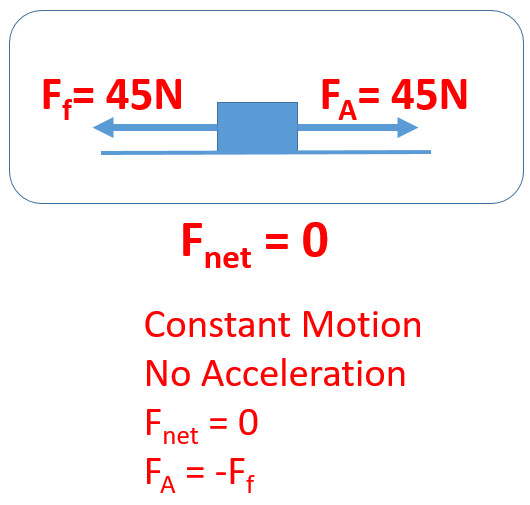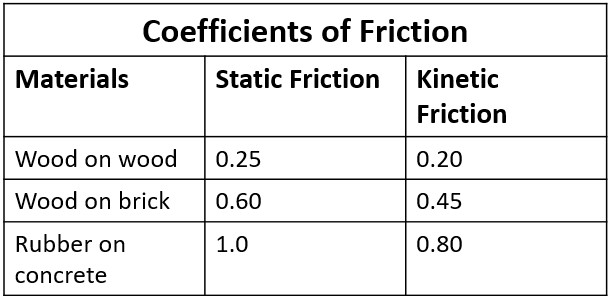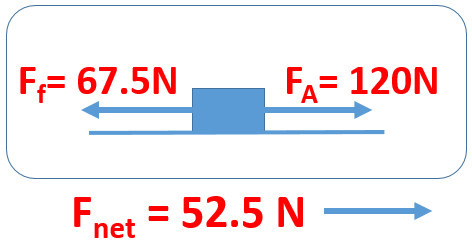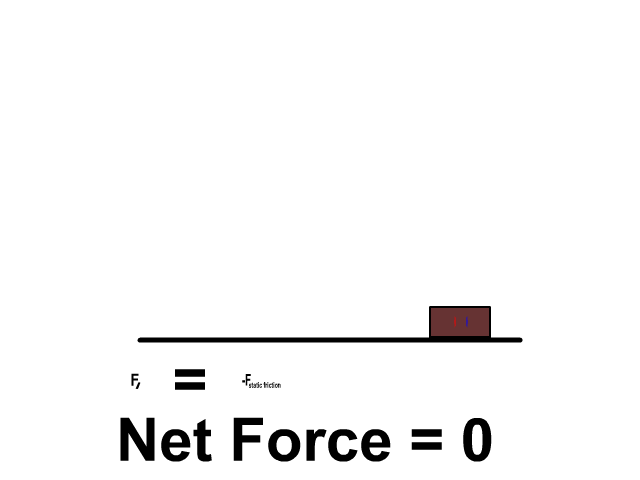Force of Friction Questions and Answers
Common force of friction problems with solutions using force applied, wight, normal force, and the coefficient of friction to find acceleration. If you need more help than these solutions go back to the content page here.
Questions:
It takes 45N of force horizontally to move a wood block constantly across a desk.
1) What is the applied force?
45 N
2) What is the force of friction?
45 N
3) What is the acceleration?
0 m/s2
4) What is the net force?
0 N

5) What force is the minimum you have to apply horizontally to get a 1.5 kg block of wood at rest to move on a wood surface?
Minimum to move so up till its still not moving: use static friction
Find normal force By finding weight
FN = -FW
Fw = mg
Fw = (1.5)(10)= 15N down
FN = 15N up
Find the force of static friction
Ff = µFN
Ff = (0.25)(15) = 3.75N

6) How much force would it take to keep the 1.5 kg block of wood moving at a constant rate after its moving?
Same block as before but now moving (use the coefficient of kinetic friction)
FN = 15N up
Ff = µFN
Ff = (0.20)(15) = 3.0 N
7a) Would a 15kg brick on a wood floor accelerate when 120N of force is applied?
FN = -FW
Fw = mg
Fw = (15)(10)= 150N down
FN = 150N up
Ff = µFN
Ff = (0.60)(150) = 90N
Yes, it would 120N greater than 90N
7b) What would its acceleration be?
Can’t use the Ff from before since it would be moving but same FN
Ff = µFN
Ff = (0.45)(150) = 67.5N
Fnet = 120 – 67.5 = 52.5N forward
F = ma


8) If you lift the side of a desk creating a incline until the moment an object first starts moving. What would happen next keeping that exact same angle and why?
C.The block would accelerate down the incline
Why? Kinetic friction is less than static friction. So as soon as there is motion the force of kinetic friction drops below the force of static friction. While the force downhill that caused the motion stays the same.
Therefore there is a net force which causes acceleration and not just motion

Links
- Back to the Friction Page
- Back to the Stickman Physics Home Page
- For video tutorials and other physics resources check out HoldensClass.com
- Find many of your animation resources in one place at the StickMan Physics Gallery
- Equation Sheet
